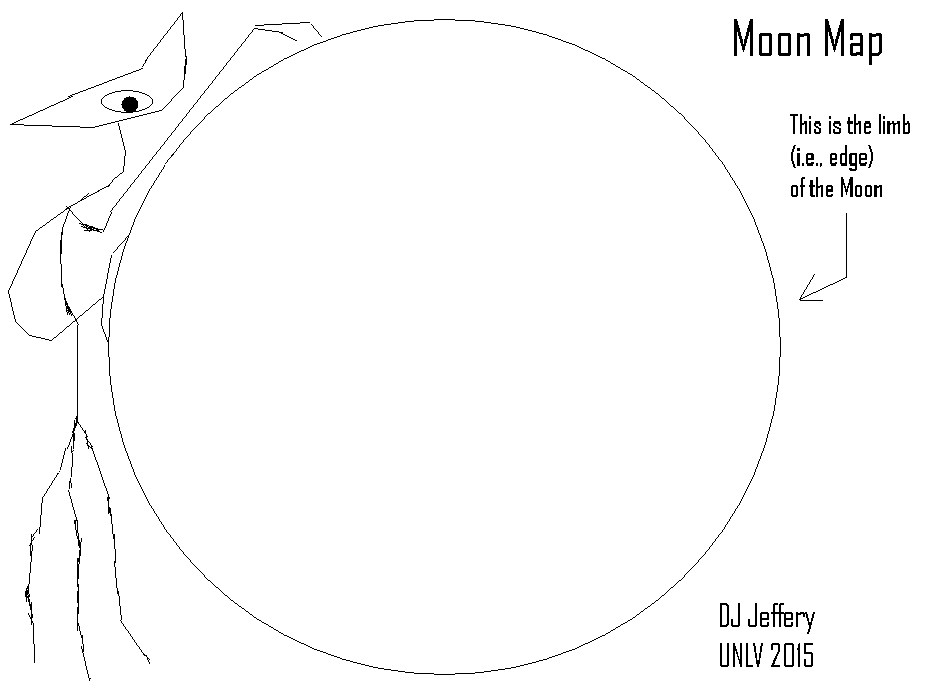
Procedure:
- Click on the Moon map
and then to print, go file/print preview/print.
The print preview allows you to adjust the printout for scale
and choose portrait/landscape.
- The is the
limb
(i.e., edge) of the Moon.
- This blank Moon map is filled in
OUTSIDE during observations.
- During the observations,
students should draw all the
Moon features they reasonably
can on this blank Moon map---the
circle is
the limb of the
Moon.
- The observations may be naked eye
or telescopic (i.e., visual astronomy
with the telescope).
For naked-eye observations, note that the Moon can be glaring when your eyes are dark adjusted (i.e., set to scotopic vision). So sunglasses might help.
For telescopic observations, the telescopes should have Moon filters on the eyepieces since otherwise the Moon will usually be too glaring to observe.
- Features that should be indicated are
the astronomical cardinal directions NSEW
(AKA the equatorial coordinate system
NSEW),
lunar maria,
lunar craters,
crater rays,
the terminator,
and the night side of Moon.
- The astronomical north direction points along
a great circle starting from your point of
interest on the celestial sphere
to the north celestial pole (NCP)
which to very good approximation is located by
Polaris.
The south direction points the opposite way along
said
great circle.
The astronomical east and
west directions are
perpendicular to
said great circle at the point of interest.
East/west is
counterclockwise/clockwise
as viewed from the NCP and, more or less, corresponds to
east/west on
the ground.
Image link: Itself.
Local file: local link: moon_map_blank.html.
File: Moon Diagram file: moon_map_blank.html.